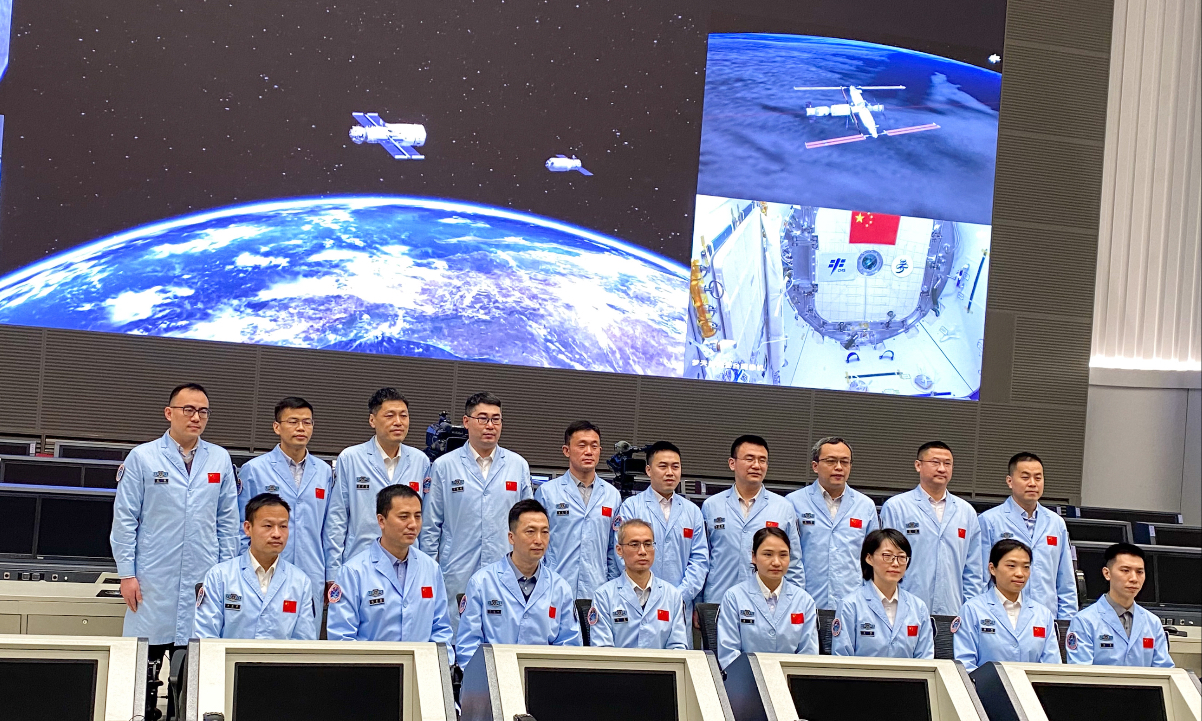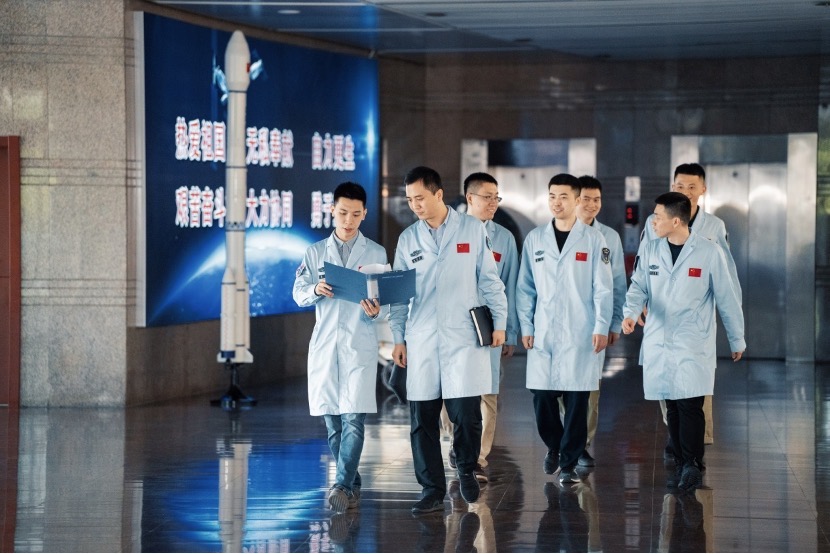
Photo: Deng Xiaoci/GT
A team of top young scientific and technological talents at the Beijing Aerospace Flight Control Center have played a key role in supporting China's major space programs in recent years, such as the Tiangong Space Station, the Chang'e lunar probes and the Tianwen Mars exploration missions. They have been participants in a number of China's achievements in space including the first-ever visit to the far side of the moon and the close-up visual capture of an asteroid.
The Global Times talked with the young team to find out about the stories behind these great achievements.
Aged less than 35 years old on average, the members of the team are in charge of key command, design and operating positions in the tasks of flight control and spacecraft management in China's manned space projects, as well as lunar and planetary exploration missions.
In the past decade, the young team has been involved in 17 major manned space spaceflight missions, four lunar probes and the country's first Mars exploration.
More than 80 percent of the team are graduates from leading universities in China, and most of them have masters and PhD degrees.
They share the same trait of having the mindset of always pursuing innovation, and are motivated by the firm will to explore the vast universe. They are also determined and inspired by the goals of constantly boosting China's capabilities of conducting space activities and expanding the boundaries.
Yu Tianyi, a deputy director of the scientific research planning office of the Beijing Aerospace Flight Control Center, is part of the young team.
Yu and his team have achieved multiple key technological breakthroughs in remote operating for the country's lunar rovers. Yu was the "driver" for the country's Yutu-2 lunar rover and he managed to steer the rover onto the surface of the far side of the moon.
Yu's team also formulated the planning and controlling system for the Yutu-2 rover's remote operation, extending the rover's service life, and making it constantly renew the world record for the longest survival time on the lunar surface.
The China National Space Administration revealed that as of January 21, Yutu-2 has been operational for more than 4 years and has trekked nearly 1,500 meters on the lunar surface. China has provided more than 940 gigabytes of data to the world collected by the rover.
Yu told the Global Times that the Chang'e-4 lunar mission and the construction of the China Space Station were the most challenging moments in his career. "As our Chang'e-4 lunar probe and Yutu-2 rover are going to new places, we are facing great uncertainties such as the landing site environment," Yu said.
Yu likened the China Space Station to a "giant transformer" in space, saying that such a complicated spacecraft demands perfection at every stage, which makes it difficult work for his team.
Bao Shuo, another member of the team who was born in the 1990s, is the flight control center's first chief dispatcher.
After the Chang'e-5 probe landed on the lunar surface in December 2020, Bao was in charge of organizing all units for the key sample collecting work.
Bao set the fastest earth-digging record on the moon's surface at just 37 minutes, as well as the record for sample collecting and sealing work, which was completed seven hours ahead of schedule. "I love beauty and fashion but I also like the beauty of chasing the space dream," Bao said.
The team has worked in solidarity, achieving multiple international firsts including the world's first Lunar Lagrangian L2 point relay and detection, and a Mars mission that involved orbiting, landing and roving. They have filled in more than 50 blank spaces of space technology for China and the world.
They have also shown the world the hard-working spirit of Chinese youth during the space missions.

Photo: Courtesy of Beijing Aerospace Flight Control Center
Full efforts to ensure victories Yu told the Global Times that it is hard to pick the most difficult moment, as the team felt it was on thin ice during each orbital launch, and each return of a manned spacecraft.
"Maybe the public are witnessing the normal process of missions stage after stage. In fact, behind each operation, we are standing by with numerous back-up plans in case of emergency," Yu explained.
Around 4 am on October 18, 2016, the flight control center was operating missions for the Shenzhou-11 manned spaceflight mission to the Tiangong-2 space lab. All of a sudden, the center's computer detected a red alert for a potential collision with debris in space when the manned spacecraft was in its 14th lap after entering orbit, and less than 24 hours before its rendezvous and docking with the Tiangong-2.
Two taikonauts on the Shenzhou-11, Jing Haipeng and Chen Dong, were close to crashing into the space debris if the flight control team had not stepped in.
By 4:30 am, the team had come up with four sets of strategies to avoid a collision. After analysis by the expert panel, they decided to jump start the remote guidance control process ahead of the original schedule.
According to the avoidance strategies, the orbit control team re-designed three orbit altering plans in 20 minutes.
By 8:59 am, a group of control direction and data was sent out. About 30 minutes later, the Shenzhou-11 spacecraft managed to change its orbit smoothly. The red alert was then successfully cleared and later the spacecraft made a successful rendezvous and docking with the Tiangong-2.
The Beijing center has staged a number of successful space rescues in recent years, including the rescue of the Yutu-2 rover as well as controlling the China Space Station to avoid colliding with space debris.
Moving toward deep spaceOutlining new exciting chapters in major projects such as deep space exploration and manned space programs, the long-anticipated fifth edition of the China Space white paper, titled China's Space Program: A 2021 Perspective, was released at the State Council Information Office in Beijing in January 2022.
It disclosed that China will, in the next five years, launch the Chang'e-6 lunar probe to collect and bring back samples from the polar regions of the moon. Chang'e-7 will perform a precise landing in the moon's polar regions and complete research and development for Chang'e-8 key technology.
Asteroid probes will also be launched to sample near-earth asteroids and to probe main-belt comets and complete key technological research on Mars. Exploration of the Jupiter system and boundary exploration of the solar system are also on the list of things to do for China's space industry in the next five years.
Gao Yuhui, a senior engineer with the Beijing Aerospace Control Center, said that he will next make plans for the country's Phase-4 lunar probe missions and manned moon landing missions. Gao adopted for the first time AI-powered planning technology to effectively solve the severe constraints faced by flight control tasks and flight control planning in complex lunar environments.
With the rapid development of China's aerospace industry, future space exploration will inevitably face more complex spacecraft systems and mission requirements. Research into safer, more reliable, more intelligent and efficient planning strategies and technical methods is an urgent task for the world's space powers, he said.
The team will also strive to make breakthroughs in the fields of intelligent planning and system engineering, Gao said.




